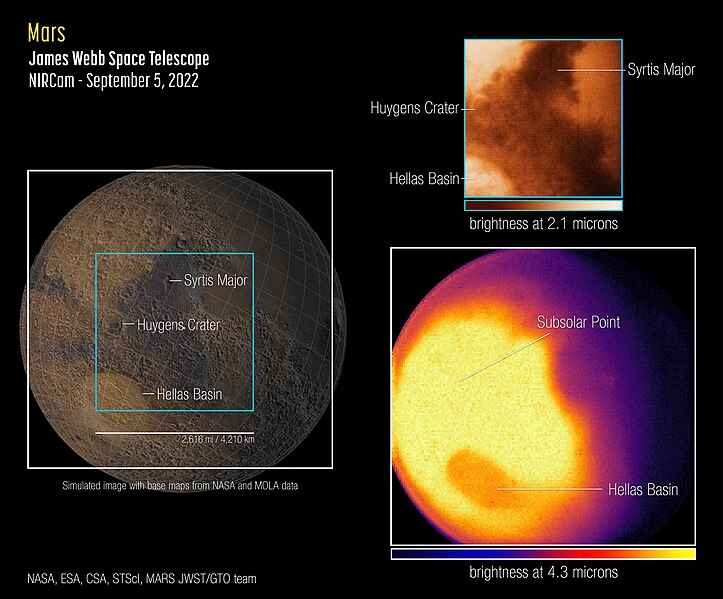Infrared Definition, Wavelength and Frequency Discussed
Infrared waves are electromagnetic waves with 700 nm to 1 mm wavelength and 300 GHz - 400 THz frequency, which is emitted by thermally-charged bodies and can be used for various purposes. This article discusses infrared definition, wavelength and frequency, as outlined below;
-Infrared Definition: 5 Ways to Define Infrared Waves
Infrared Definition: 5 Ways to Define Infrared Waves
Infrared is a form of electromagnetic radiation that vibrates at frequencies between 700 nanometers (nm) and 1 millimeter (mm) in the EM spectrum, and which has peculiar characteristics that make it useful in a variety of ways [4].
Synonyms of infrared include infrared radiation, thermal radiation and infrared waves.
It is called infrared to denote that it has a lower frequency than the upper extreme of visible light, which is represented by the color red in the R-O-Y-G-B-I-V light spectrum. The term infrared is derived from infra-red, where infra means below, or less-than; so that infrared can be interpreted as 'below red' or 'less (frequency) than red (light)'.
An alternative infrared definition is given below, which further highlights its attributes, and makes mention of some of the sources of infrared waves;
Infrared waves are electromagnetic waves that are not visible to the eyes, but can be felt ad thermal energy emitted from sources like fire, solar radiation, organic metabolism, planetary bodies, and artificial heating devices [5] [6].

The first infrared definition given in this section, makes reference to the fact that infrared radiation is 'useful in a variety of ways'. This is validated below, where and alternative infrared definition lists some of the uses of infrared waves;
Infrared refers to medium-wavelength electromagnetic waves that are emitted by thermally-energized bodies, and can be used for various applications like; thermal imaging, autoimmune disease treatment, environmental monitoring, infrared astronomy, wireless short-range communication, spectroscopy, and cosmetic radiotherapy [2].

It is useful to note that several of the uses of infrared waves as stated above are not unique, aa they may also be achieved with other forms of electromagnetic radiation, such as wireless communication and astronomy using radio waves, as well as radiotherapy using Gamma and X-rays.
Examples of infrared waves can be used to provide more insight as to its peculiarity, as well as its relevance in everyday scenarios, as shown in the infrared definition below;
Infrared is a form of invisible electromagnetic radiation with a heating effect, which is exemplified by; solar infrared, thermal emissions from fire, long-wave infrared in wireless communication systems, observed radiation in thermal imaging, artificial infrared from electric heaters and infrared lamps, among others.
Lastly, the dangers of infrared radiation are used as a central theme in the infrared definition;
Infrared radiation is electromagnetic radiation from hot bodies like the Sun, fire, and electric heaters, which has multiple potential uses, and to which overexposure is accompanied by dangers to human health like; optical inflammation, vision loss (scotoma), hemorrhaging, skin damage, corneal ulcers, retinal burns, and cataracts [1].
Wavelength of Infrared Waves
The wavelength of infrared radiation in nm (nanometers) is 700-10^6 nm; which can be given in meters as 7× 10^(-7) - 10^(-4) m; and in micrometers as 0.7-10^3 µm.
In most studies, it is stated simply as 700 nm to 1 mm.
Infrared cannot be described as short or long wavelength radiation, when compared to other electromagnetic waves, because it occupies an intermediate position between short wavelength radiation (Gamma, X-rays, Ultraviolet) and long wavelength radiation (Microwaves, Radio Waves). But because it has a longer wavelength than visible light, it is generally convenient to describe it as a long-wavelength radiation.
We experience infrared radiation as significant, measurable heat because its long wavelength allows it travel through vacuums and materials with less deflection.
Different types of infrared radiation can be identified based on differences in range of wavelength. The types of infrared radiation are; short-wavelength, mid-wavelength or medium wavelength, long-wavelength, near-infrared and far-infrared. They are listed along with their wavelength ranges in the table below;
Type of Infrared Radiation | Wavelength in microns (µm) |
Near-Infrared | 0.75 - 1.4 |
Short-Wavelength Infrared (SWIR) | 1.4 - 3.0 |
Mid-Wavelength Infrared (MWIR) | 3.0 - 5.0 |
Long-Wavelength Infrared (LWIR) | 8.0 - 15.0 |
Far Infrared | 15.0 - 1,000 |
The different wavelength-types of infrared radiation, can be used for different forms of thermal imaging, so that there are short wavelength infrared (SWIR) cameras, as well as MWIR and LWIR cameras.
Frequency of Infrared Waves
The wavelength and frequency of infrared radiation are two key characteristics, which bear inverse relationship to each other.
Infrared radiation is short-frequency (or low frequency) type, since its wavelength is long compared to that of other forms of EM radiation.
The frequency of infrared radiation ranges from 300 GHz - 400 THz, which can be given in Hertz as 3×10^11 - 4×10^14 Hz [3].
Radiation frequency determines the energy intensity or exposition of electromagnetic waves, so that infrared is far more energetic than radio waves, and is applicable for purposes requiring tangible energy in the form of heat.
Conclusion
Infrared radiation is a long-wavelength, low-frequency type of electromagnetic radiation with lower frequency than visible light, and which is emitted in solar radiation and combustion processes.
Infrared wavelength ranges from 700-10^6 nm; which can be given in meters as 7× 10^(-7) - 10^(-4) m; and in micrometers as 0.7-10^3 µm.
Infrared frequency ranges from 300 GHz - 400 THz, or 3×10^11 - 4×10^14 Hz.
References
1). Cato, J. (2018). "Negative Effects of Infrared Waves." Available at: https://sciencing.com/negative-effects-infrared-waves-8592303.html. (Accessed 3 April 2023).
2). Cihan, Y. B.; Sarigoz, T. (2016). "Role of Digital Infrared Thermal Imaging in Radiation Therapy Planning and Toxicity." Asian Pac J Cancer Prev. 2016;17(8):4183-4. Available at: http://journal.waocp.org/article_33119.html. (Accessed 3 April 2023).
3). Fayed, M. (2023). "The Maximum conversion efficiency for solar spectral irradiance and utilization of direct solar radiation 1.1 What is an Electromagnetic spectrum?" Available at: https://www.researchgate.net/publication/368253838_The_Maximum_conversion_efficiency_for_solar_spectral_irradiance_and_utilization_of_direct_solar_radiation_11_What_is_an_Electromagnetic_spectrum. (Accessed 3 April 2023).
4). Lajevardipour, A.; Vilagosh, Z.; Appadoo, D.; Davis, J.; Juodkazis, S.; Wood, A. (2021). "Spectroscopy of excised skin patches exposed to THz and far-IR radiation." Biomed Opt Express. 2021 Jul 1;12(7):4610-4626. Available at: https://doi.org/10.1364/BOE.424267. (Accessed 3 April 2023).
5). Lucas, J. (2019). "What Is Infrared?" Available at: https://www.livescience.com/50260-infrared-radiation.html. (Accessed 3 April 2023).
6). Romeo, G.; Borello, F. (2008). "First Flight of Scaled Electric Solar Powered UAV for Mediterranean Sea Border Surveillance Forest and Fire Monitoring." Available at: https://www.semanticscholar.org/paper/First-Flight-of-Scaled-Electric-Solar-Powered-UAV-%26-Romeo-Pacino/ae3a6c81d7d61b90b6a8e7e32deb3fb266144c73. (Accessed 3 April 2023).



